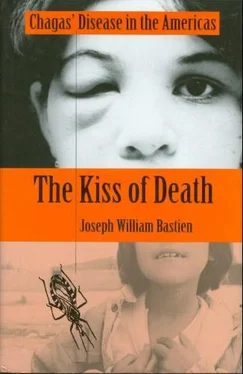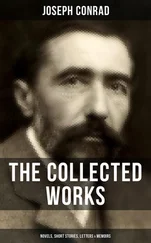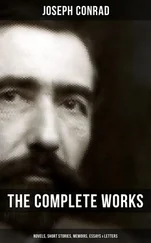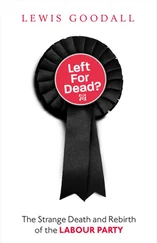8. See Voltarelli, Donadi, and Falcao 1987; Cunningham, Grogl, and Kuhn 1980; Mosca, Briceño, and Hernández 1991.
9. These antigens include many stress proteins with sequence homology to those of living organisms (Young, Lathigra, and Hendrix 1988).
1. An appropriate technology for chagasic control is to teach peasants how to prevent vinchuca infestation by means of readily available materials, such as the use of cow dung in plastering and the use of bottle caps with nails through them to secure roofing and sheeting. For an excellent study on housing in La Paz, see Köster 1995.
2. Bolivia has traditionally had authoritarian governments, a carryover from colonial times. Presidents enjoyed power akin to the concept of the “divine right of kings.” By 1985, Bolivians had suffered a series of military dictators, the most brutal being Luis Garcia Meza, presently serving thirty years in prison for his crimes. In 1997, Bolivians voted for another “old time” military leader, General Hugo Banzer.
1. Another acronym for the organization is PSBB, which refers to Proyecto Social Boliviano-Británico “Cardenal Maurer .” By 1994, the British government no longer partially financed this project, so it was shortened to the Cardenal Maurer Project (CM).
2. The Proyecto Británico Cardenal Maurer project in Chuquisaca was included in 1991 as one of three pilot projects sponsored by the Bolivian Secretariat of Health (SOH) and Community and Child Health (CCH), with assistance from the United States Agency for International Development (USAID) and the Centers for Disease Control (CDC). The SOH/CCH Chagas Control Program ended on December 31, 1994.
3. Other successful health projects in Bolivia support this conclusion. Enthusiastic leaders include Gregory Rake with the CHW program in Oruro, Oscar Velasco with Project Concern in Potosí, Evaristo Mayda with ethnomedicinal practitioners in Cochabamba, Irene Vance with Pro-Habitat in La Paz, and José Beltrán with Plan International in Tarija.
4. These nongovernmental organizations (NGOs) include Pro-Habitat (Tarija), Plan-International (Tarija), and Proyecto Chagas (Cochabamba).
5. As authorities on the control of Chagas’ disease in Bolivia, Bryan and Tonn (1990) wrote: “PBCM in Sucre is the best project of Chagas’ disease control. It is a small project but well organized, with emphasis on community participation, health education, fumigation, and improvement of housing. It serves as a model for other chagasic control projects.”
6. See WHO and UNICEF 1978:2-3; Coreil and Mull 1990; Phillips 1990:150-77.
7. USAID in Bolivia subcontracts many of its projects to nongovernmental organizations such as Project Concern, Save the Children, Operation Hope, Caritas. These organizations have their own goals underlying proposed humanitarian objectives of the project. As one measure, PROCOSI was formed in Bolivia in the 1980s and serves as a coordinating board of NGOs in Bolivia through which USAID-Bolivia channels developmental monies.
8. Paulo Freire initiated concientización in Brazil, and spread it throughout Latin America by his writings, most notably, Pedagogy of the Oppressed (1970) and Education for Critical Consciousness (1973). See Luft (1983) and Hope and Timmel (1987) for detailed descriptions of concientización pedagogy. Although concientización has been identified with Karl Marx’s analyses of the contradictions inherent in matter and the exploitation of the peasant by the capitalist classes, it also reflects the teachings of Jesus. Freire’s 1970 book became a “Marxist’s bible,” as some saw it, for liberation-theology priests forming base communities. Severe military repression, both by Latin American and U.S. military forces, has extinguished these priests and their base communities. For a different interpretation see Berryman (1987:34-38, 71, 73, 130).
9. These pilot projects modified the role of community health workers (CHWs). A plan was adopted where each CHW was responsible for forty to ninety (average sixty) houses, and their fundamental role was to visit each family weekly to provide motivation and technical education (SOH/CCH 1994:16). This required too much time from CHWs, however, who were required to spend from thirty to sixty hours a week visiting families, considering that they have other responsibilities and are unpaid. In contrast, PBCM’s practice of having traveling teams and CHWs meet together with the community members was more effective. Community leaders were motivated to assume responsibility for seeing that every family carried out its assigned task. The community accepted responsibility to carry out the project and CHWs served as liaison between the house improvement committees and PBCM personnel.
10. The total cost for 400 houses was $83,256, out of which villagers provided $37,642 in work and materials, and collaborators in the project provided $45,614, of which PBCM gave $10,814, Catholic Relief Services $5,000, the British embassy $5,000, and PROCOSI $24,800. PROCOSI (Programa de Coordinación en Supervivencia Infantil) is funded by USAID and the Bolivia Child Survival program. It is a supervisory and administrative organization for many nongovernmental health agencies and projects in Bolivia.
11. Volunteer labor is figured in to the cost of each house to indicate to providers of funds that what they contribute is matched. However, this gives the impression that house improvement is much more costly to the taxpayer or contributor.
12. The addition of vermifuge plants to wall plaster is another possibility, and insecticide paints are now being used effectively in Brazil (Pinchin et al. 1978a, 1978b).
13. Slow-release insecticide paints used during house building have shown lasting properties of killing 100 percent of 5th instar T. infestans after a ten-minute period of contact more than five years after being applied and subsequently exposed to environmental conditions in Brazil (Oliveira Filho, Deus, and Brasil 1987). Structures of a house were painted with black bitumen paint containing 9.7 percent clorpyrifos-ethyl (Dursban) before covering them with mud. This technique could be used in areas where houses are being built or restored. Using Dursban insecticide for painting walls presents problems of toxicity for humans, however.
14. An alternative low-cost roofing for tropical areas of Latin America involves the conversion of fibrous agricultural residues, such as bagasse from sugar cane, into a corrugated fiber roofing panel, which requires a relatively low capital investment and is labor intensive (Bryant 1978). Cost per square foot is about fifteen cents in U.S. money (1978).
15. Because of its clay content, walls built of unstabilized soil will swell on taking up water and shrink on drying (Briceño-León 1987:384). This results in cracking, which provides nesting areas for vinchucas. Soil stabilization is achieved by increasing the strength and cohesion of the soil, reducing the movement of moisture in the soil, and by making the soil more waterproof. Strength of a soil can be increased by the addition ofcementious materials, such as Portland cement or other materials that include hydrated lime and lime-pozzolana mixes. A pozzolanic reaction is the reaction between lime and certain clay minerals to form various cementlike compounds. Lime also reduces the extent to which clay absorbs water, thus making the soil less sensitive to changes in moisture.
Читать дальше












